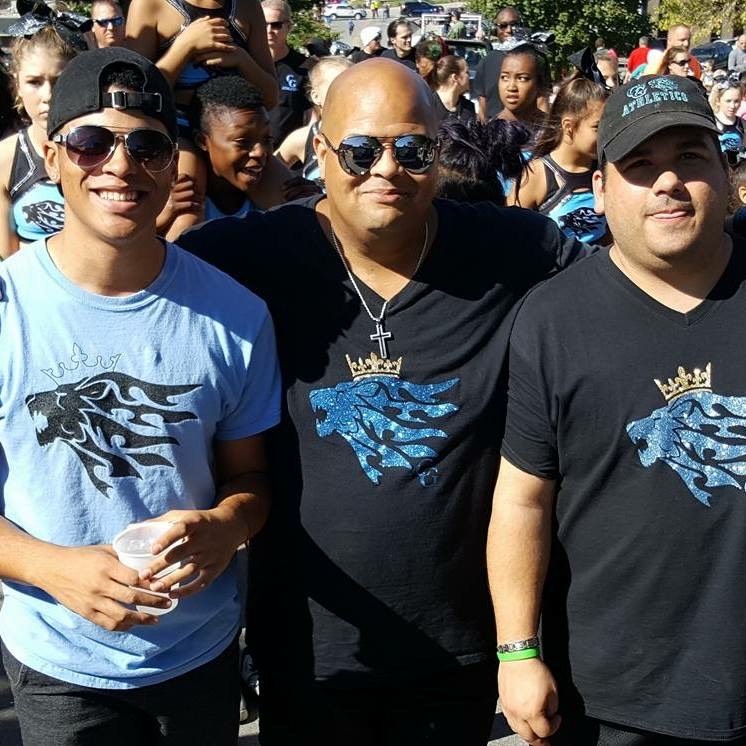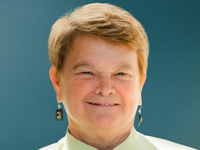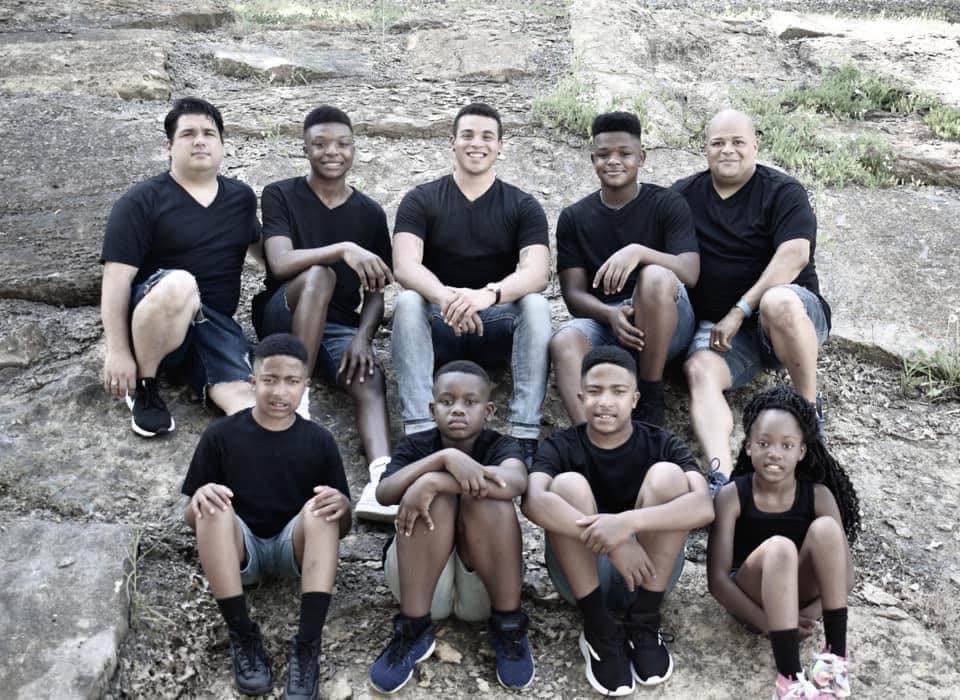
Testifying before the House Ways and Means Committee last month, 22-year-old Weston Charles-Gallo recalled the sting of his father’s words when he was a boy. If his son turned out to be gay, he recounted, he would “beat the gay out of him,” and throw the teenager out of his house.
When he finally came out to his parents as a young teen, Charles-Gallo told The Imprint, his father reacted in anger, throwing candles around the room and punching a wall. His mother said his sexual identity was proof of her husband’s failure.
“It really led to a lot of pain and essentially hating myself, praying to God, looking in the mirror and thinking why would God create me this way,” he said.
Eventually, life at Charles-Gallo’s small-town Missouri home became so unstable, a domestic dispute turned violent and he ended up in juvenile hall for a month. Unable to return home, he entered foster care at age 14, housed in placements where he was shunned by other children and caregivers, and given little sympathy when he was bullied at school.
Like many LGBTQ youth, Charles-Gallo fled rejection and abuse, only to enter a foster care system that failed to accept and support him. In June, a new federally backed study in Ohio underscored his experience and added to a growing body of evidence: One in three foster youth identify as lesbian, gay, bisexual or transgender, and they are among the most likely to face difficulty in government care.
“We need to know who the children in our care are, and what their needs are, so we can serve them,” Cynthia Weiskittel, director of the Ohio’s Cuyahoga County Division of Children and Family Services, stated in a press release. “LGBTQ+ young people were always here, but now we see them, and we can build the systems they need to feel safe, supported, and affirmed.”
According to the University of Maryland study released earlier this month that surveyed Cuyahoga County youth, 32% identified as LGBTQ+. That number is more than three times the rate of queer youth in the general population.
Forty-two of the LGBTQ+ foster youth ages 12 to 21 reported “that they could never be themselves in the place they are currently living.” LBGTQ foster youth are more likely to spend time in foster care shuffled from one temporary home to the next; more likely to struggle to find supportive adults; more likely to be sent to group homes; and more likely to be hospitalized for emotional distress.
The most recent study of 251 youth in and around Cleveland, Ohio mirrored similar findings from a New York study published last year, and a 2019 California study of 10- to 18-year-olds.
Charles-Gallo spent more than a year in Missouri’s foster care system, living for months in unfamiliar and often-unwelcoming homes. He was hospitalized for suicidal thoughts and ran away from his last foster home before ending up in a residential treatment facility.
When Eric and Louis Charles-Gallo — the two men who would become his dads — first took him in, Weston finally found refuge and stability. He joined their bustling Kansas City-area home with six other siblings, and immediately connected with his soon-to-be father Eric, who was also biracial. The two shared a love of big cats, Dreamgirls and Tyler Perry productions. Eric was a cheerleading coach, and Weston a squad member during his teen years.

“At previous placements, I felt I had to really hide who I was and walk on eggshells, not really talking a whole lot,” he said. “My dad carries himself so well, he’s somebody I can look up to.”
The importance of such connections are now surfacing as part of a national conversation involving religious rights and the obligation of government contractors to serve children of all genders and sexual identities.
A closely watched Supreme Court decision last month upheld the right of a Philadelphia faith-based nonprofit agency to turn away same-sex couples interested in caring for abused and neglected children. Amid a nationwide shortage of foster homes for older teens, 11 states have passed laws that allow government-licensed foster care agencies to refuse to serve children or families on religious grounds, according to the nonprofit advocacy group Family Equality. And this year, five more states proposed similar legislation.
The unanimous ruling in Fulton v. City of Philadelphia on June 17 found that the city violated Catholic Social Services’ First Amendment rights by requiring the agency to approve the homes of same-sex couples looking to foster children.
The decision had a limited scope. It focused on the fact that Philadelphia’s child welfare commissioner had the option to grant Catholic Social Services an exemption to its local policy, but chose not to, a case expected to affect only state and local governments that allow for such exemptions.
Becket, the legal firm representing the Catholic service agency in the Supreme Court’s Fulton case, emphasized after the ruling that the foster care agency served “kids regardless of their race, religion, sex, or sexual orientation,” even though it does not extend all such protections to the parents who offer to care for them.
In the wake of the highest court’s decision, some child welfare agencies are reaffirming their support for LGBTQ caregivers and foster youth.
“We are deeply disappointed with the Supreme Court’s ruling but, make no mistake, New York City will continue to do everything we can to support our existing dedicated foster parents, as well as expand our pool of foster families, regardless of their religion or sexual orientation,” New York Administration of Children’s Services Commissioner David Hansell said in an emailed statement on June 22.
Late last month, the Los Angeles County Board of Supervisors again pledged to do more for its LGBTQ foster youth, including improved recruitment and retention of supportive foster parents. Overseeing the nation’s largest county-run child welfare agency, supervisors ordered up a plan for tailored services, a 24/7 crisis helpline and a dedicated corps of social workers specialized training.
Supervisor Sheila Kuehl, who was California’s first openly gay state legislator in the 1990s, said the department must go beyond efforts to train caregivers and staff. For decades, she said, LGBTQ youth have ended up on the streets or in foster care, known as “throwaway kids” because parents rejected their sexual identity or gender fluidity and kicked them out of their homes.

She noted the unique challenges that queer youth face — particularly family rejection and bullying — that end up compromising their mental health, housing stability and financial security.
“We don’t want this community just to barely get by, we want them to thrive,” Kuehl said at a public meeting last week. “And this requires an investment.”
LGBTQ caregivers have long served as a critical resource for many child welfare agencies. Same-sex parents are seven times more likely to raise adoptive and foster children than heterosexual couples, according to the Williams Institute at UCLA.
LGBTQ couples tend to go to extra lengths to find therapeutic services for children, and to take in their siblings, said Rich Valenza, executive director at RaiseAChild, a Los Angeles-based foster family agency that has served many LGBTQ couples.
“For the challenge of LGBTQ+ youth in foster care, initially it makes logical sense that LGBTQ+ caregivers would be the answer,” Valenza said. “After all, they have lived through the same or similar experiences.”
But despite that likelihood in an often-hostile society, he added, “there’s no exclusivity here.” At his agency, non-LGBTQ parents with gay siblings, parents or other relatives and friends often show great “compassion and understanding.”
Those opportunities can be scarce in some states. Natalie Clark, an advocate who spent six years in Utah’s foster care system, said discrimination forces many LGBTQ youth to hide their identities. At a town hall discussion of the recent Supreme Court decision last month, Clark shared her experience of being rejected by a foster family after disclosing her same-sex crush during an overnight visit from her group home when she and the foster parents were getting to know each other.
“Young people don’t get to choose which agency serves them,” Clark said.
To address the situation nationally, advocates for LGBTQ rights are backing the John Lewis Every Child Deserves a Family Act — federal legislation recently introduced in Congress that would prohibit any type of discrimination based on sexual orientation, gender identity, religion or marital status by government-funded child welfare providers. The legislation would also ban conversion therapy in foster care, require greater data collection on LGBTQ youth and families and create a center for LGBTQ foster youth within the Department of Health and Human Services’ Administration for Children and Families.
Rep. Angie Craig of Minnesota, who introduced the legislation, said more than 20 years ago she and her wife were initially prevented from adopting their son because of LGBTQ discrimination by the agency and the birth mother’s family. Now, she said, the couple’s four sons show what families like hers can offer foster children.
“The only thing a child needs is safety and security and love, and there’s more love in the LGBTQ community than there is almost anywhere,” she said in a video promoting the legislation.

Growing research on just how many youth in foster care identify as LGBTQ underscores the urgent need for permanent homes. Not too long ago, child welfare agencies denied they even existed, said Shannan Wilber, youth policy director at the National Center for Lesbian Rights.
“We’re more and more aware of the fact that the government is not a good parent,“ said Wilber. “When they come into foster care, things often get much worse for queer kids because of the bias that exists in their communities, their families and other institutions within the system.”
Charles-Gallo said he had little access to resources or role models during a traumatic year in foster care. At every school, he was harassed for being gay and one of the only Black students in a rural part of Missouri. A social worker once confided to him that foster parents had refused to take him in for fear that he would be a predator, or a bad influence on other children in their homes.
“I had to be placed in a residential facility under emergency shelter because there weren’t any affirming placements available that would want to take in a gay Black teenager,” he said. “There’s just so many things that were against me, and I knew that I needed to get into a space where I felt supported and I felt loved and cared for.”
At the Charles-Gallo home, he didn’t have to hide his identity, and it was a relief. Even though he started out shy and reserved, sometimes testing his new fathers’ commitment, Charles-Gallo said he began to open up to a new experience of family — welcomed at gatherings with other relatives and among his new younger siblings.
His adoption was finalized when he was 16, and since then Charles-Gallo has become an advocate for same-sex couples who want to take in foster youth.
“I just have a hard time connecting the dots and understanding why we’re turning people away when there’s so many youth that need a loving and affirming placement,” he said, “and we already have people who are capable of doing that.”





